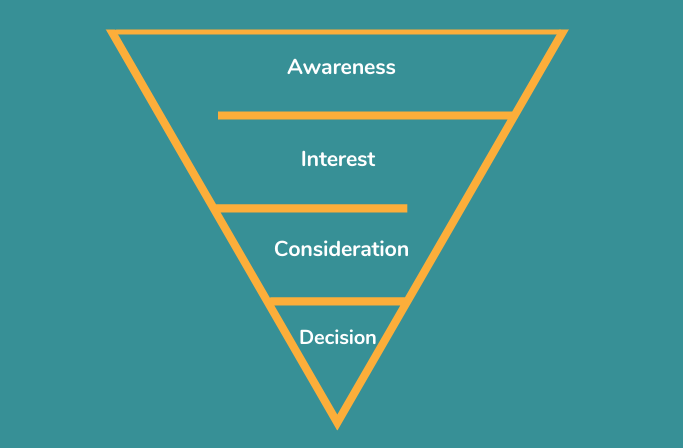Search engine optimization (SEO) is a tricky, ever-changing concept. Brand competitors are constantly fighting for that top spot on Google. So, how can you stand out and make your brand easy to find? Cue, the integration of social media and SEO.
Stay On The Mind, All The Time
Syncing social media and SEO will increase consistency and visibility in your marketing strategy, ensuring your brand is in the right place at the right time.
If you have been in marketing awhile, you have probably heard of the magic Marketing Rule of Seven. This rule states that a prospective customer needs to hear or see a brand’s message at least seven times before they will take an actionable step toward buying a product or service. Marketers use this rule by displaying messaging on various mediums, so target customers will see it seven or more times.
The tricky part? Leading your prospective customer down the right path at the right times. For example, it’s already too late if a prospect’s first encounter with your brand is a final-push sales message, when dozens of other brands have likely already presented a solution to the prospect’s problem.
To successfully engage a prospect several times throughout their buying journey, social media and SEO strategies need to be knitted together.
The Buyer’s Journey
Let’s go back to Marketing 101 and take a look at the buyer’s journey – the process buyers go through when they make a purchase.
1. Awareness: Prospective buyer seeks to identify problem or need
2. Interest: Prospect searches for solutions to problem or need
3. Consideration: Prospect researches solution providers
4. Decision: Prospect narrows down consideration set to a single provider and makes a purchase
The second phase of this journey, “interest,” is the sweet spot for your social media and SEO to work together.

Interest Phase in Action
The interest phase, when a future customer is discovering a solution to their problem, is where prospects travel frequently between social media platforms and search engines. In this phase, every customer behaves differently and has channels they are more comfortable with than others. Let me give you a few examples:
Ella, a 25-year-old college graduate who just moved to Dallas, is beginning to decorate her apartment and desires a new art piece for her wall. She heads to Pinterest to explore some various art but, despite a few attempts, can’t figure out exactly what to search for. So Ella heads to Google to search art genres so she can better understand art terminology. After she learns the verbiage for several different types of art, she goes to Instagram and does some hashtag searching to find the kind of art piece she wants to put on display in her new place.
Ella realizes she loves most of the pieces tagged #figurativepainting, and decides to tweak her search by adding the word “Dallas” to her hashtag searches because she loves local art. After perusing through various paintings, she comes to the end of the interest phase and starts considering businesses to purchase from.
Social media and search engines are a great place for the awareness phase to morph into the interest phase. Possible customers can discover your brand through things like a friend of your prospect sharing your content, hashtag and Google searching, or even rabbit-hole social media stalking (we’ve all done that).
Let’s imagine a different scenario. Steve is 35 years old and loves to play golf. However, he keeps losing against his friends. So he turns to YouTube for some golf tips and tricks. After his DIY techniques don’t seem to pan out, he heads over to Google to see if there are any golf pros who offer training near him. He clicks through a few different golf pro websites but doesn’t make any decisions.
The next night Steve is doing his nightly scrolls through Instagram when he comes across a few of the golf pros he saw on Google. He is able to watch their videos and see their coaching techniques in action. This completely changes Steve’s view of these teachers and he starts considering a few different golf pros in the area for training, based on their techniques in the videos.
Steve’s example is completely different from Ella’s, but they have similarities. Both people travel through different mediums, jump from search engines to social media platforms, and arrive at the consideration phase. If your social media and SEO strategies are not aligned, your business is in danger of getting buried by other high-ranking competitors who have optimized specifically for prospective customers switching between social media platforms and search engines.
A New Look At SEO
Social media and SEO strategies have a very important key in common – SEARCH! Virtually all social media platforms have a search component, allowing users to customize their feed and content.
SEO has always been centered around search but with a focus on optimizing websites around searchable characteristics. As marketers, our focus needs to shift to include social media channels. Gone are the days when these strategies are viewed as two separate components of your brand – say hello to an integrated marketing strategy.

Create Golden Content Via Social Listening
Website SEO boils down to understanding and creating hyper-relevant content, and optimizing it within major search engines to answer your customers’ problems. By pairing SEO and social media content strategies, you can use your web posts as multiple social media posts that can be shared across various channels.
Tailoring messaging and content to audience interests during a specific phase of their buyer journey is not a new concept. If you understand your customers’ motivations, lifestyle, problems and more, you can create a strategy to place your brand message in front of them.
Social media can help you develop the right content if you are willing to put in time to listen.
Your customers are already talking by writing about what they love or don’t in reviews, online groups and social media posts. You can also keep an eye on your competitors to see the content they publish and promote, the hashtags they use, and what their fans love or don’t. By gathering these insights online, you can create a multi-channel content strategy to attract more customers through channels they are already using.
Let’s Work Together
Your social media and SEO can be a dream team for bringing in, converting and retaining new customers. But we get it, executing the perfect recipe for success isn’t a “piece of cake.”
If you are struggling to gain traction with your social media or SEO efforts, send us a note! We’d love to hear what you are up to and brainstorm how we can help. It’s what we do!

